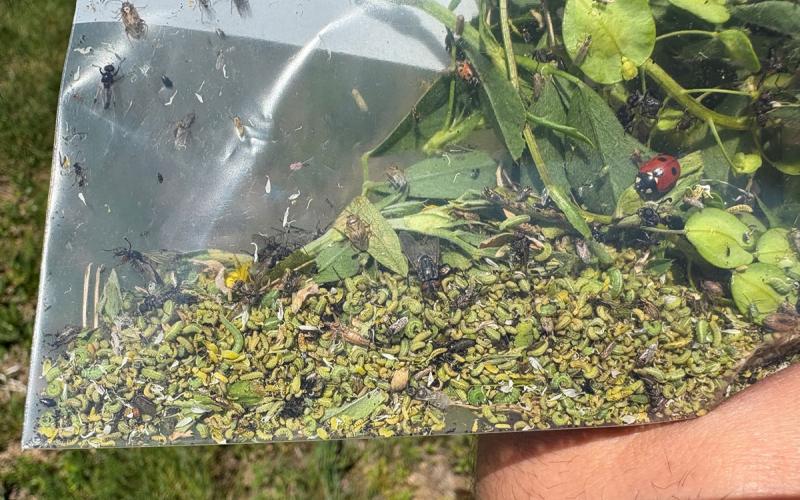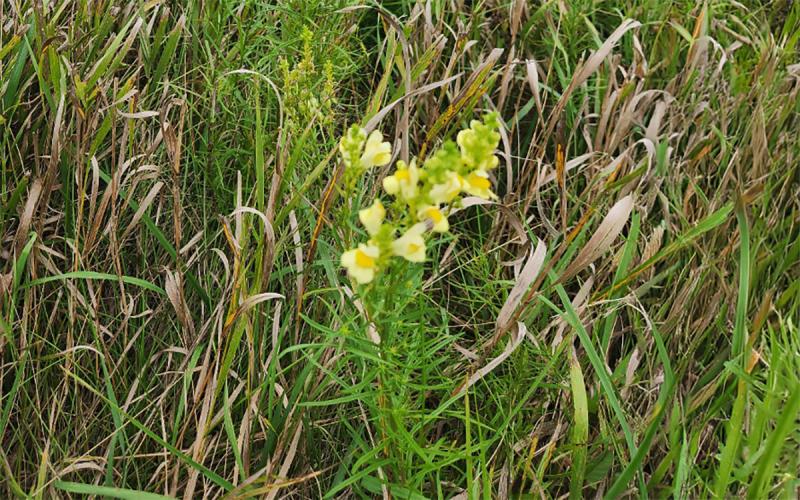Written with contributions by Shelby Pritchard, former SDSU Extension Pest Management Specialist.
Originally Submitted: April 28, 2022
Although our spring temperatures have been fluctuating, we have been accumulating degree days, which means some of our insect pests will be emerging soon. One of the insects we monitor using degree day accumulation is the alfalfa weevil. It was another cool week without a lot of degree day accumulations. With warmer temperatures in the upcoming forecast, the need to scout for alfalfa weevil activity will increase. Most of the state is still having low temperatures that are close to or below 32°F, which will slow down alfalfa weevil activity and development.
Calculating Degree Days for Alfalfa Weevils
To monitor for alfalfa weevils, we can estimate activity based on degree day accumulation. The equation for degree days is:
(Maximum daily temperature + Minimum daily temperature) ÷ 2 - The Developmental Threshold
For the alfalfa weevil, the developmental threshold is 48 degrees Fahrenheit. This equation is used for days during which the maximum temperature exceeds 48 degrees Fahrenheit. In cases where the minimum temperature is lower than 48 degrees Fahrenheit, the actual temperature is substituted by the 48 degrees Fahrenheit developmental threshold since no development is occurring below it. Degree day accumulation begins on Jan. 1. First overwintering adult alfalfa weevil activity is generally observed around 200-degree days and larvae hatch is generally around 300-degree days (Table 1).
The alfalfa weevil has four larval instars, with the first being the smallest larvae and the fourth being the largest larvae. The later instar larvae will consume additional leaf tissue, which results in increased defoliation. As a result, management would ideally be done while larvae are still in the first and second instar growth stages.
Current Estimate on Alfalfa Weevil Activity in South Dakota
Based on current degree day accumulations, overwintering alfalfa weevil adult activity is likely in areas around Newell, Rapid City, Hot Springs, Faith, Cottonwood, Mission, Pierre, Winner, Huron, Mitchell, Tyndall and Vermillion. In the areas around Rapid City, Hot Springs, Cottonwood, Mission, Winner and Tyndall, it is possible that larvae activity and early feeding may be observed in alfalfa fields (Table 2).
|
Degree Days |
Alfalfa Weevil Activity (Overwintering as Adults) |
|---|---|
|
|
Limited to no activity of alfalfa weevils. |
|
|
Overwintering adult activity is observed in alfalfa fields (begin scouting fields). |
|
|
Spring laid eggs hatch. First instar larvae begin feeding. |
|
|
Second instar larvae feeding. |
|
|
Third instar larvae feeding. |
|
|
Fourth instar larvae feeding. (Period when greatest damage will occur) |
|
|
Pupation. |
|
|
Adult emergence (will overwinter). |
| Location |
Since January 1, 2022 |
|---|---|
| Buffalo |
|
| Newell |
|
| Rapid City |
|
| Hot Springs |
|
| Lemmon |
|
| Faith |
|
| Cottonwood |
|
| Mission |
|
| Selby |
|
| Gettysburg |
|
| Pierre |
|
| Winner |
|
| Aberdeen |
|
| Huron |
|
| Mitchell |
|
| Tyndall |
|
| Sisseton |
|
| Brookings |
|
| Vermillion |
|


